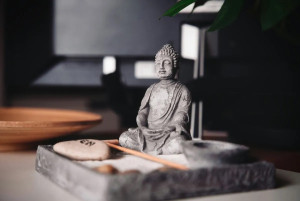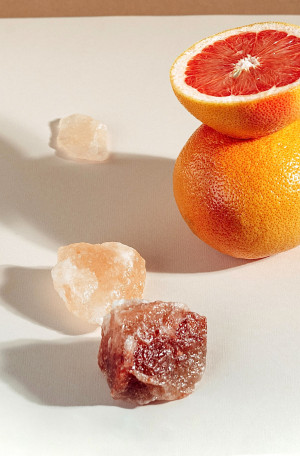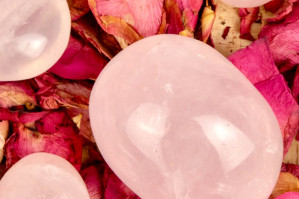The History of Essential Oils
The history of essential oils is directly intertwined with herbalism and herbal medicine. Ancient cultures viewed certain plants and trees as being truly “magical” and have said to have profound effects on minor alignments and life threatening diseases. Very common plants that we use today were the focal point of ritual work in ancient times.
Meaning & Energy
The burning of incense or plants in these rituals were said to connect the physical and spiritual worlds together. The word “perfume” comes from the Latin word meaning “through smoke”, in which many cultures believed there was a Divine essence through the plant smoke during rituals.Greek Philosopher Aristotle even wrote in a 4th century B.C.E text of his personal belief of the power of plants.
Ancient Egyptian Origins
Ancient Egyptians are believed to be the first modern ancient culture to engage in the use of herbal medicine and practices. The Ebers Papyrus is a 110 page scroll written in 1500 B.C.E containing over 700 formulas and remedies for a variety of diseases. It was purchased in 1873 in Luxor (Thebes) Egypt and is now housed at the University of Leipzig in Germany. This scroll is the best preservation we have of what medicinal practices were used and for what ailments. The heart was widely recognized by the Egyptians as the vessel that keeps us alive and breathing. They knew the heart was an organ that pumps blood throughout our circulatory system and was the epicenter of our very existence. We’ve also learned that they’ve recognized mental issues such as depression and dementia and how to go about treating them. Sections of the scroll contained medicinal recipes for pregnancy, intestinal disease, eye and skin problems, parasites, tumors, gynecology, surgical procedures, and even dentistry.

One of the most royal herbs in all of Egyptian lore was Frankincense. They believed it was the “perfume of the gods” and was used heavily in ritualistic work. It was an oil of the highest class and was normally housed in Jade bottles. These bottles were recently uncovered by archaeologists through dig sites. Tomb openings have even preserved their scents when opened thousands of years later.
Ritualistic Uses
The Hebrews are said to have left Egypt in 1240 B.C.E and brought back the use of oils and perfumes to Israel. They too used these liquids for healing and ritualistic activities and even kept certain fragrances apart from the rest. The reason being that they did not want to taint their medicine with the offerings they were giving to the gods.
The Babylonians and Sumerians became heavily enticed with herbal medicine and decided to supply other countries and civilizations with herbs through trading and bartering. Some of their most prized plants were Cedarwood, Pine, Cypress, and Myrtle.
Following other civilization practices, the Assyrians and Mesopotamians began having ceremonies and using the herbs as an offering to Gods and deities. They would have large prayer groups at these ceremonies asking the Gods for health, wealth, and abundance.
All of these cultures realized the power and magic that these herbs held, and a trading route was soon set up. By the 2nd century B.C.E., there was a thriving herb, oil, and spice trading route that ran through Europe, Middle East, Asia, and India.
From India to Ayurvedic
India itself has some of the oldest practices involving herb and spices dating back to 1500 B.C.E. The Vedas, which is a large body of religious text originating in ancient India, praise aromatics like cinnamon, ginger, coriander, and sandalwood. These people viewed herbs as sacred healing medicine that was capable of healing just about anything. This belief led to the creation of Ayurvedic, the oldest and most popular practice of alternative medicine in India. Even though this originated around 1500 B.C.E, some concepts are believed to have been around since 3000 B.C.E. Another piece of evidence depicting herbs as healers found from ancient India is The Charaka Samhita. This text was written by a physician named Charaka, and it detailed over 350 plants and herbs used in the healing of all different types of issues. It’s commonly referenced still to this day for any individuals who are practitioners of Ayurvedic, or other similar beliefs.
Influence on Chinese Medicine
All of this herbal medicine activity in southwestern Asia soon spread to Eastern Asia and became a major part of ancient Chinese civilization. The “Esoteric Scripture of the Yellow Emperor” is a collection of old medical writings believed to be written in 475 B.C.E- 220 A.D. This became the basis for Chinese Medicine and heavily detailed acupuncture, herbal medicine, massaging, diet and exercise. Another text called “Shennong Bencaojing” also referred to as “The Classic of Herbal Medicine” is a book written about agriculture and medicinal plants. It was written in 200 A.D. but is said to have been influenced by previous information gathered across multiple centuries. Many herbs still being used to this day are mentioned such as ginseng, cannabis, cinnamon, and eucommia bark. As Chinese medicine began to flourish and its ideology became widely accepted, traveling monks soon went east and visited other Asian countries like Japan and Korea. Both countries picked up on its ideology almost immediately and soon made it a huge part of their cultures.
Greek and Roman Uses
Greek historian Herodotus visited Egypt circa 450 B.C.E and brought back the knowledge of herbs he had learned about. He spread his wisdom throughout the Greek Empire and it became widely accepted. Unlike Egyptian culture which only allowed for herbs and oils to be distributed to the wealthy, all social classes of Greeks were able to own them. Not only were the herbs used as medicine, but also a tool in which to honor the gods. The Greek people were very spiritual and believed that anything that came from Earth or her plants were a gift from the deities. Simply wearing any perfume or oil daily was viewed as a way to honor the gods who have “gifted” them these magical herbs. A Greek botanist named Pedanius Dioscorides created the first herbal manuscript in Europe called “De Materia Medica”. The Greek culture played a major part in influencing the Roman Empire. When the Greek empire was defeated at the Battle of Corinth in 146 BC by the Romans, much of their cultural ideologies did not change, but in fact play a part in the development of the Roman culture. These people took essential oils and spread it throughout their society where it became widely accepted.

In the famous Roman Public Baths, shelves were lined with jars full of essential oils and herbs to use during bathing. One of the most common herbs used in bath houses was lavender. It’s believed that the Romans found Lavender in exploration around the Mediterranean and eastern India. They are credited with the widespread exposure of Lavender across Europe. The word “lavender” even comes from the Latin word “lavare”, which means to wash. Soldiers also took Myrrh with them in to battle and placed its oils on wounds, cuts and scrapes. Fennel oil was also commonly used in society as a common day “breath mint” or to kill fleas and other insects.
Essential Oils Down Under
The aboriginal people of Australia had a very high praise and understanding of their native plants. These people had a sophisticated system of natural medicines that could be used for a variety of physical ailments. Some of the most famous oils today such as tea tree and eucalyptus come from plants and trees native to Australia. Even in the famous “Outback”, sandalwood was collected and burnt around expecting mothers as a way to calm and relax the nerves.
The colonization of Australia by the British when they made landfall in 1788, actually had a major impact on their medical system and society. That same year, Eucalyptus oil was steam distilled for the very first time. The new explorers went crazy over its health benefits and eventually pushed it into commercial distillation in 1852. Baron Ferdinand Von Mueller was the government botanist for the colony of Victoria and was a major influence in the spread of herbal medicine into the western culture.
During the first two world wars, Australian soldiers carried tea tree oil with them through battle to apply to any aches, pains, bruises, and scrapes. Also during World War 2, lemon myrtle was being harvested and distilled by drink manufacturers to provide a lemon essence in soldier’s water. The supply could not keep up with the demand though, and eventually all operations ceased. Peppermint oil also became widely used for the production of menthol until a synthetic menthol was established.
Middle Ages (Witchcraft)
During the Middle Ages, herbal medicine, essential oils, and aromatics were denounced by the Catholic Church. The uses of these herbs and oils as medicinal tools was labeled as “witchcraft”, with most certainly death following. This led to widespread panic as well as even some practitioners fleeing for their lives. Many physicians settled in Constantinople (modern day Turkey) and instilled Hippocrates wisdom and teachings. During this time, natural medicine was still widely popular and accepted east of Europe, and most importantly, was protected. As the Crusades waged on in Europe, the Middle East created and controlled the next version of the oil and perfume industry and were soon wanted everywhere. The Moors are credited with bringing back oils and herbs to Europe following the ending of the Crusades. This crucial action is said to have restarted trade talks and alleviate tension between Europe and the Middle East. But the 13th century, an even stronger trade connection than ever before had been established and oils were once again running rampant amongst Europe.

This would stay this way for a very long time, or until Great Britain’s King George III takes power in 1760. He believed the scent of potions and oils was a sign of witchcraft and betrayal. A man or woman caught using these tools under his rule was more than likely sentenced to death. His rule ended in 1820, but expanded the reign of the British Empire throughout the world. Soon after his death, society took a turn for the better and started producing oil and herbal medicine on a commercial level again. This time it didn’t last long due to a dictators ruling, but instead due to the hyper development of chemical and synthetic ingredients being established. This lasted until around the 1920’s when something miraculous happened to a chemist in France.
The French "Revolution" of Essential Oils
His name is Rene-Maurice Gattefosse and he is known as the,” Father of Aromatherapy”. He was born 1881 in Lyon, France and is the son of a very successful business owner who opened Gattefossé Establishments a year prior to Rene-Maurice’s birth. His business was involved with producing essential oils and petroleum oils for use in perfumes and drugs. Rene-Maurice grew up in the factory and eventually made the decision that he wanted to be apart of the family business. He went to University of Lyon and got a degree in chemical engineering.

One night while he was working in the lab by himself, an explosion happened. He documented this and entered the following in his journal
“In my personal experience, after a laboratory explosion covered me with burning substances which I extinguished by rolling on a grassy lawn, both my hands were covered with a rapidly developing gas gangrene. Just one rinse with lavender essence stopped the ‘gasification of the tissue’. This treatment was followed by profuse sweating and healing began the next day.”

From that moment forward Rene-Maurice devoted much of his life to research and work of essential oils and around circa 1925 he coined the phrase “Aromatherapy.” In 1937 he published “Aromathérapie” which is collection of all of his essential oil research and documentation by multiple doctors. This classic is still referenced to this day.
Using Essential Oils With Crystals
It is very common for user to combine the power of essential oils with crystals. Crystals offers up endless energy and vibrations that project immense calming, healing and manifestation abilities. Every oil and crystal has different attributes, and using both during a meditation session can prove just how powerful together they may be. Imagine placing Peppermint oil on your wrist, back of your neck, and in a diffuser to fill your environment up. Within seconds you will feel a cool, soothing effect which will naturally relax and calm the physical body. As the diffuser heats up and begins to release peppermint oil fumes, our mind begins to slow and calm itself more and more with every breath we take. Now imagine taking a crystal like Rose Quartz and placing it over your heart as you lie down on your back with your eyes shut. The Rose Quartz naturally opens and unlocks one’s heart and radiates healing vibrations throughout the body. The Rose Quartz will begin pumping and pulsating like the functions of your heart, with every beat, vibrations being sent to the farthest part of your body and circulating back. This action imbues oneself with pink rays of positivity and a heart that is wide open and filled with love. Meditation sessions like these can be done with hundreds of different essential oils and thousands of different crystal combinations. All of the information you need about specific crystals and their attributes can be found on our crystal knowledge page!



